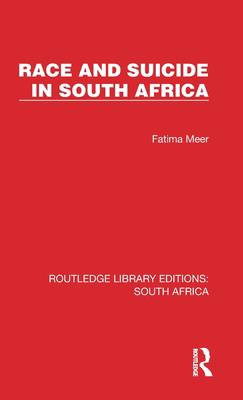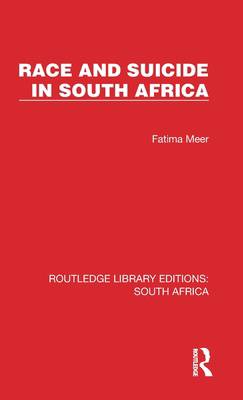
- Retrait gratuit dans votre magasin Club
- 7.000.000 titres dans notre catalogue
- Payer en toute sécurité
- Toujours un magasin près de chez vous
- Retrait gratuit dans votre magasin Club
- 7.000.0000 titres dans notre catalogue
- Payer en toute sécurité
- Toujours un magasin près de chez vous
Description
Originally published in 1976 Race and Suicide in South Africa synthesises the two dimensions of suicide: the personal and the social phenomenon. Its approach is Durkheimian in the use of court records, and phenomenological in the examination of actual cases. About 1500 cases of suicide in Durban from 1940-70 are analysed in terms of race, sex, occupation, marital status, economic status, family type and size, residential area, time and method used. What emerges is a revealing picture of suicide in South African ethnic groups. The findings confute the idea of Durkheim and others that behaviour in suicide conforms to certain universal principles and suggest the crucial role of particular social conditions in determining suicide trends, while at the same time challenging the proposition that a high suicide rate is associated with high status. Instead the author found that there were common emotional syndromes among suicides, but there were contributed to by different social factors.
Spécifications
Parties prenantes
- Auteur(s) :
- Editeur:
Contenu
- Nombre de pages :
- 322
- Langue:
- Anglais
- Collection :
Caractéristiques
- EAN:
- 9781032326702
- Date de parution :
- 05-10-22
- Format:
- Livre relié
- Format numérique:
- Genaaid
- Dimensions :
- 140 mm x 216 mm
- Poids :
- 530 g

Les avis
Nous publions uniquement les avis qui respectent les conditions requises. Consultez nos conditions pour les avis.






